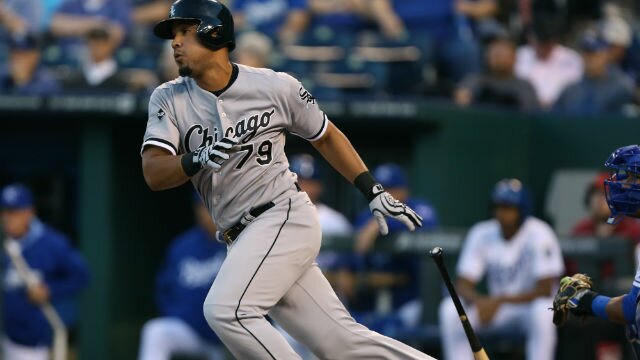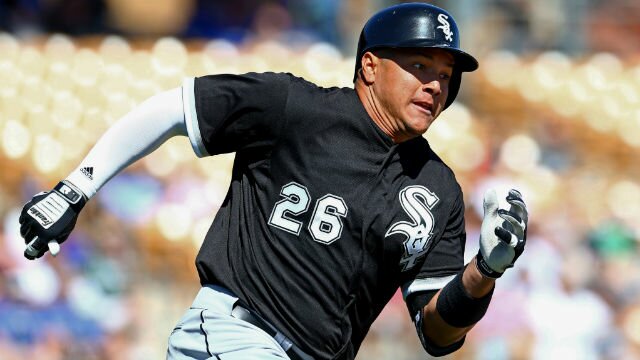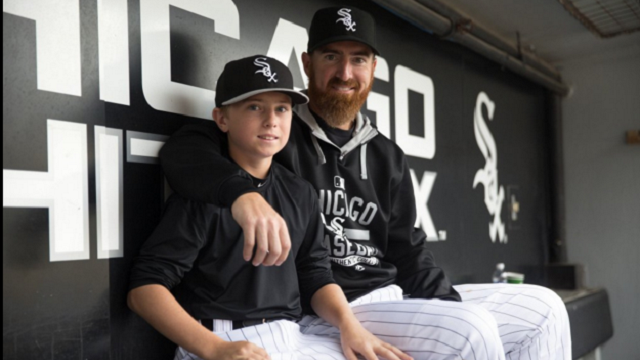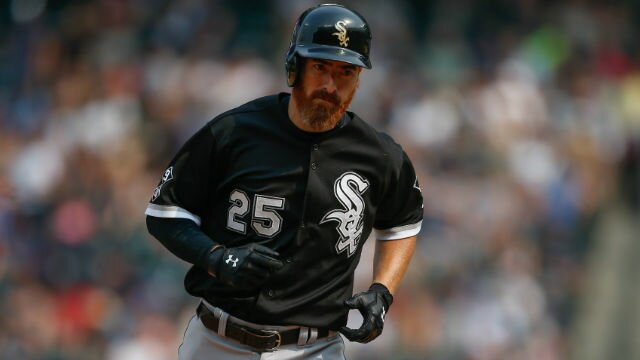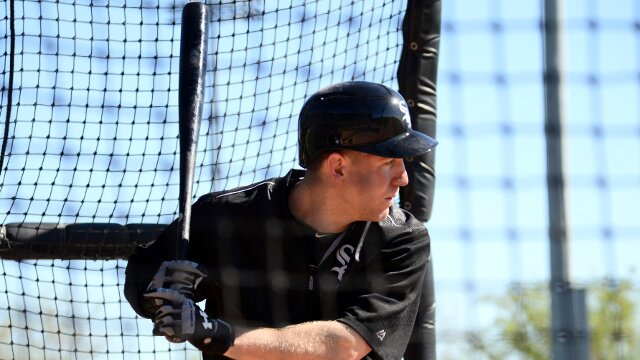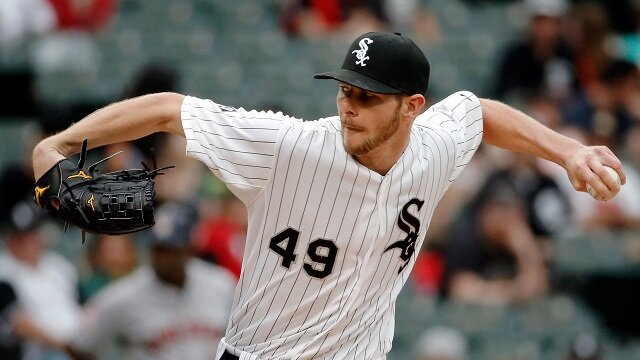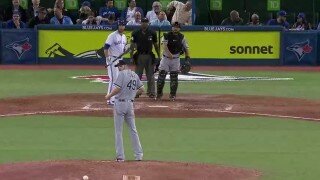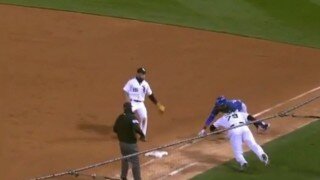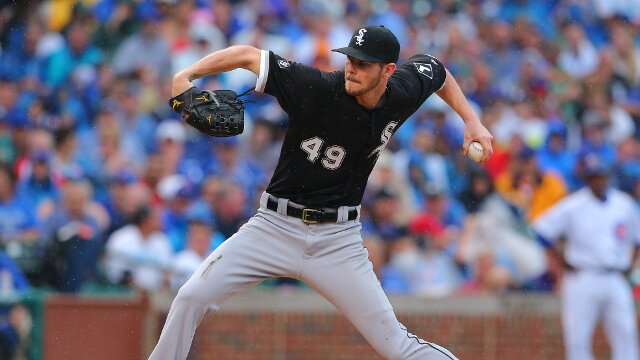
After making 79 appearances out of the Chicago White Sox bullpen from 2010-2011, Chris Sale first became a member of the South Siders’ rotation in 2012 and has since established himself as one of the premier left-handed starters in MLB. Quite amazingly, the annual All-Star and Cy Young-contending southpaw is still only 26 years old.
Perhaps most interestingly, however, Sale is pitching on a five-year, $32.5 million contract he signed prior to the beginning of the 2013 campaign. The deal also contains a pair of team options for 2018 and 2019, which are worth $12.5 and $13.5 million respectively.
Considering what Sale brings to the table, his current deal is shaping up to be one of the better bargains in the game. Through his first 18 starts this season, he has gone 8-5 with a 2.86 ERA, 2.37 FIP, 2.38 xFIP and an 0.99 WHIP. To put it simply, he has the numbers that guys who are making $25-plus million per year are expected to post. He has also been worth 4.1 fWAR, a mark that most pitchers would love to end the season with, let alone have at the beginning of the “unofficial” second half of the season.
The concept of wins above replacement has also become an interesting and useful way to gauge what a player can earn on the free agent market. Although there is some disagreement when it comes to what each win is worth, most put the number between $5-7 million. Therefore, by using the bottom figure of $5 million, a 4.0 win player can be worth at least $20 million. In addition to the aforementioned work he has done this year, Sale has been worth 4.5, 4.7 and 5.1 fWAR over the past three full seasons respectively, so the White Sox were indeed wise to lock him up when they did.
Since the start of the 2012 season, his 18.5 fWAR ranks fifth among all qualified starting pitchers in the game. The four players he trails, David Price, Felix Hernandez, Max Scherzer and Clayton Kershaw, are all earning eight-figure salaries this season, which is something that Sale will not do until 2017, when his payday will rise to $12 million. He is making $6 million this season and will earn $9.15 million next year, which should paint a pretty vivid picture of just how much he is, and will likely continue outperforming his contract.
For the sake of comparison, perhaps it would be worthwhile to take a look at Price, another one of the game’s best left-handed starters who actually will be a free agent this offseason — well, barring the unlikely event that he and the Detroit Tigers agree to an extension before then, of course.
Price has been worth a minimum of 4.3 fWAR every year since the beginning of the 2010 campaign, and it appears that he is getting even better with age. He was worth a career-high (combined) 6.1 fWAR last season with the Tampa Bay Rays and Tigers, and he has already put up a mark of 3.5 so far this year in his first full season in the Motor City.
Although Price appears to be the type of guy who may favor a comfortable playing environment over going to the highest bidder, it is very likely that he will ink a deal that will either be above, or in the vicinity of $200 million. Given the way he has been throwing the ball this year, it would hardly be shocking to see him sign a contract on the level of the seven-year, $210 million deal the Washington Nationals gave Scherzer, his former teammate, this past January. Scherzer’s deal happened to be the second-largest contract in the history of the game for a starting pitcher, trailing only Clayton Kershaw‘s seven-year, $215 million extension.
When it comes to Scherzer, he was good for a 2.1-3.6 win season each year between 2009-2011, but he didn’t truly become elite until about halfway through 2012, and he was coming off of a three-year stretch where he was worth an average of 5.1 fWAR at the time he signed with Washington. He has now taken his game to another planet in 2015, already posting a 5.1 fWAR through his first 19 starts.
That brings us back to Sale, who has certainly earned the right to be lumped into the same conversation as these guys. If there is one thing that he has going for him that Price and Scherzer may not have, however, it is the fact that he has time on his side.
Price will turn 30 in August, and Scherzer will turn 31 later this month. Assuming that both of his options are picked up, Sale will be right about the same age when he finally hits the market after the 2019 season, but what would he be able to garner right now at the age of 26? Well, a Scherzer-like contract, or one on the level that Price will soon sign, certainly wouldn’t be too much of a stretch.
Another thing that separates Sale from Price and Scherzer is the fact that he was good right away. Yes, Price dominated as a reliever when he first came up back in 2008, but he struggled a bit in his first season in the Rays’ rotation in 2009. It took Scherzer a bit of time to grow into his potential as well.
But, could there also be a chance that Sale is peaking too early, and if so, how good can he get before there is nowhere to go but down? Well, there is always that possibility to consider, but fortunately for the White Sox, Sale is still very young and they are not locked into a Justin Verlander-esque contract where they have to pay him $28 million annually.
When it comes to Sale’s durability, he landed on the DL for the very first time in his career in the spring of 2014 with a flexor muscle strain, and prior to the beginning of this season he suffered a freak, off-the-field injury when he fractured his foot; still, he isn’t necessarily a huge health risk per se. Injury history aside, though, he hasn’t been a Verlander, CC Sabathia, Cole Hamels or James Shields-type workhorse so far either.
Out of the three full seasons he has spent in as a starter, 2013 was the only year in which he crossed the magical 200-inning marker. He has, however, thrown 125.2 innings so far this season, and ESPN projects him to finish the season with 225.2 innings thrown. It would be a career high, but there’s still a long road for him to hit that number.
Also, if he does in fact throw that many innings, how will that impact him next season and beyond? Well, let’s examine the type of pitches he has been throwing to see if there’s anything that may or may not bode well for his longevity.
Over the past two seasons, it is interesting to note that Sale has begun throwing more four-seam fastballs and changeups while throwing fewer sliders and sinkers. According to data from Brooks Baseball, between 2012-2013, Sale threw his four-seamer 35.32 percent of the time with his slider, sinker and changeup making up 27.97, 19.56 and 17.15 percent of his pitches respectively. Between 2014-15, he has thrown 41.52 percent four-seamers, 17.89 percent sliders, 11.42 percent sinkers and 29.12 percent changeups.
Since switching up his pitch usage, he has actually become better. Sure, he ground-ball rate has gone down, but his K/9 has gone up and the improvement can easily be seen in his ERA and ERA indicators. His four-seam fastball has also been coming it at an average velocity of 95.27 mph over the past two seasons compared to 93.95 between 2012-13, so perhaps there is a correlation between the changes he has made to his pitch selection and the increase in velocity. Throwing fewer sliders could certainly be easier on his arm as well.
With the non-waiver trading deadline just around the corner, another subject that has been coming up lately is the issue of Sale’s trade value. When comparing him to the other pitchers who are reportedly being shopped around at the moment, Sale could probably bring back more than any of them considering his youth, early-career success and team-friendly contract.
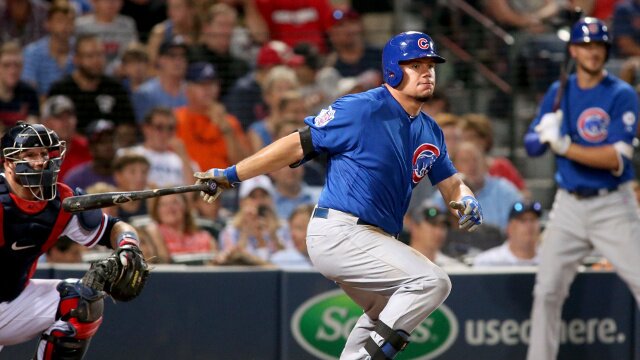
Hypothetically speaking, if the White Sox were to feel out the Chicago Cubs‘ interesting in trading for Sale, for example, it is likely the conversation would merely begin with an Addison Russell or someone on the level of Kyle Schwarber heading from the North Side to the South Side as part of the deal. Sale could bring back multiple young, MLB-ready players who could help the White Sox rebuild.
But should they? Well, the truth is, the White Sox may not be that far away from contending, and they would have a far greater chance of getting into the postseason in 2016 with Sale than without.
Of course, many expected the South Siders to be a major presence in the AL Central after their major offseason moves, so the fact that they are currently in last place with a record of 42-48 certainly comes as a disappointment for White Sox fans. That said, many of the same pieces will still be there next season, so perhaps they just need to be a little bit more patient.
Obviously, Jeff Samardzija is a free-agent-to-be and while he may not be in Chicago for much longer, Jose Quintana and Carlos Rodon will be. Quintana, who is also signed to a team-friendly deal, has been somewhat of a “tough-luck loser” this year with a record of 4-9, but he has been worth a healthy 2.3 fWAR. Last season, he was worth 5.0 fWAR.
Rodon, who entered the 2015 campaign as the White Sox top prospect, has gone 3-2 with a 3.80 ERA and a 3.69 FIP thus far. Although his WHIP is inflated at 1.61, he has still been quite good for a 22-year-old and likely still hasn’t even scratched the surface of how good he can be.
A top three of Sale, Quintana and Rodon could potentially be right up there with the best of the best in 2016. Seeing as how they are all southpaws and they have yet another in John Danks, it probably wouldn’t hurt for the White Sox to throw another righty into the mix if Samardzija leaves or is traded. Still, this could be a very, very good rotation. Their bullpen also has the potential to be quite good, and newcomers Zach Duke and David Robertson have certainly not disappointed.
When it comes to their offense, the White Sox have a pretty nice core of players as well, especially with Jose Abreu and an Avisail Garcia who has still yet to reach his full potential. Based on their track records, one would also have to believe that Melky Cabrera and Adam LaRoche will bounce back as well.
The best course of action for the White Sox may be to wait until the end of the 2016 season to decide whether or not to trade Sale. If they have another disappointing year and Sale stays healthy and continues to dominate, he will still have plenty of value with one more full season of team control before he gets to the option years.
* All statistical information courtesy of Baseball Reference, Brooks Baseball, ESPN.com and Fangraphs
Brad Faber is a Senior Writer and Sabermetrics Columnist for www.RantSports.com. Follow him on Twitter @Brad_Faber, “Like” him on Facebook or add him to your network on LinkedIn or Google.
 Share
Share 

